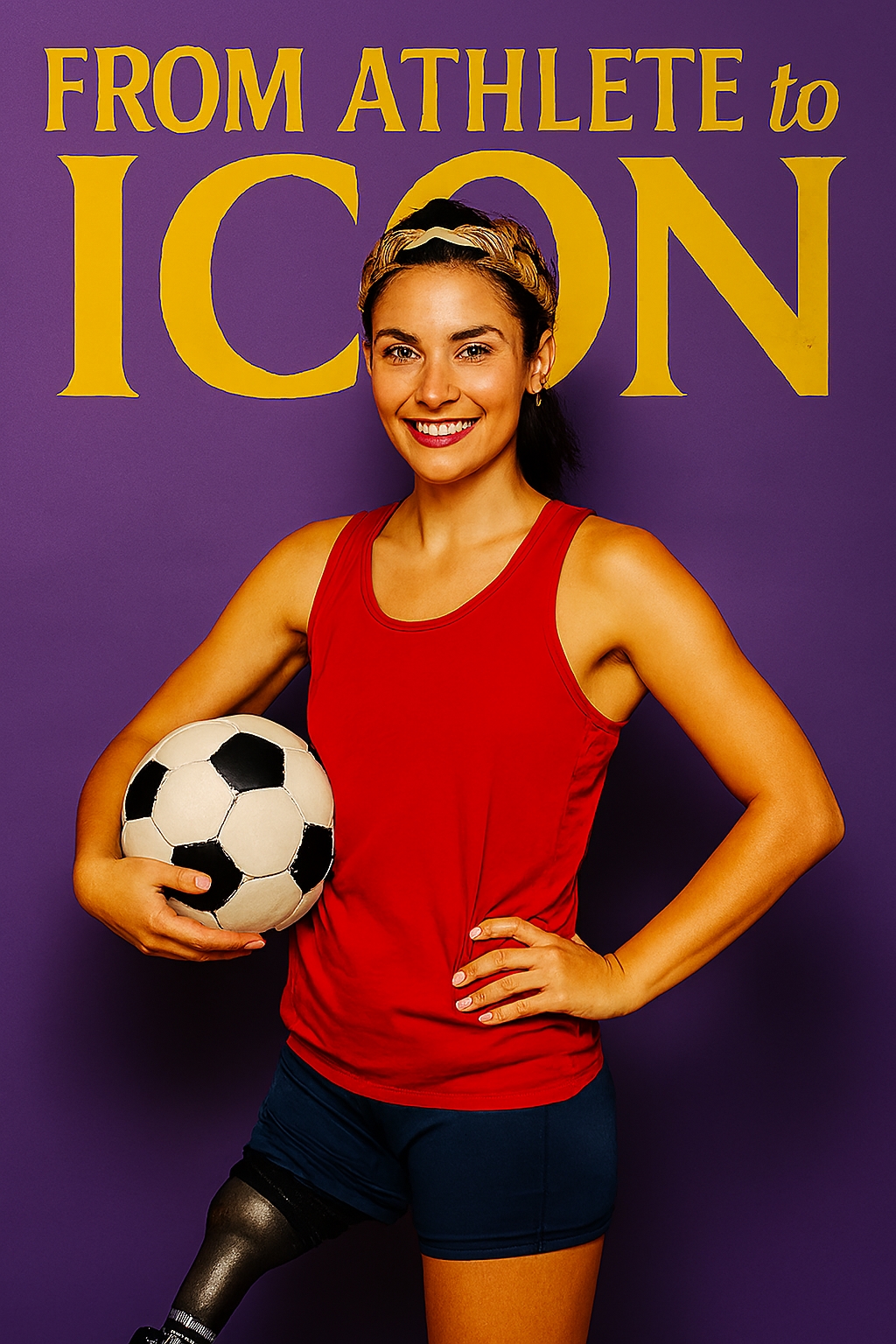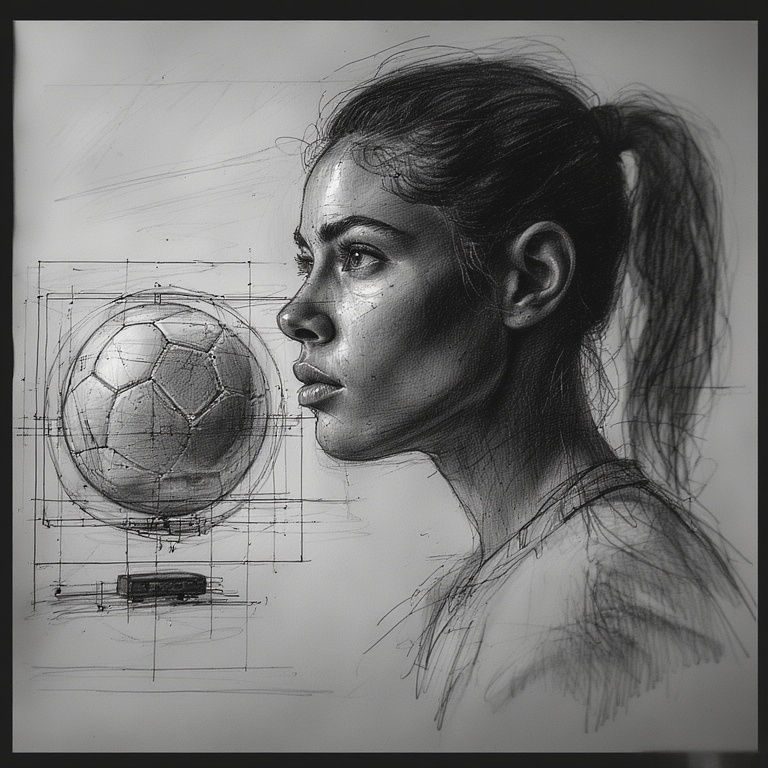Influence Beyond Performance
Marketability as Strategic Identity
In the contemporary landscape of global sport, marketability is no longer a passive consequence of athletic excellence. It is a strategic construct – an outcome shaped by narrative, visibility, cultural resonance, and psychological engagement. While technical performance remains foundational, the athletes who ascend to iconic status are those who understand how to build and manage influence across multiple domains.
This post offers a comprehensive, multi-dimensional analysis of what makes certain athletes marketable beyond their sport. It dissects the anatomy of influence – exploring how identity, media, culture, and strategy converge to create enduring public figures.

Performance vs Perception – The Myth of Meritocracy
While performance is essential, it is rarely sufficient. Marketable athletes are not always the most statistically dominant – they are the ones who create emotionally resonant moments. Clutch victories, symbolic wins, and dramatic narratives often eclipse consistent but quiet excellence.
Perception is shaped by –
- The emotional context of competition
- The symbolic weight of victories
- The visibility and timing of performance
- The narrative arc surrounding the athlete’s journey
In short, perception amplifies performance when it aligns with broader cultural or emotional frameworks.

Narrative Construction – The Power of Storytelling
Narrative is the connective tissue between athlete and audience. A compelling personal story – whether rooted in adversity, transformation, or defiance – can elevate an athlete’s profile far beyond their technical achievements.
Common narrative archetypes include –
- The Underdog – Rising from obscurity or disadvantage
- The Pioneer – Breaking barriers in gender, race, or geography
- The Survivor – Overcoming injury, illness, or personal loss
- The Rebel – Challenging norms or institutions
These stories foster emotional investment – transforming spectators into stakeholders.
Visibility Through Global Events – Amplification Platforms
Major international competitions serve as accelerants for marketability. Athletes who perform during high-visibility events – Olympics, World Cups, Grand Slams – benefit from concentrated media attention and global audience engagement.
Visibility is enhanced by –
- Strategic timing of peak performance
- Saturation across media platforms
- Symbolic representation of national or cultural pride
- Viral moments that transcend sport
These events act as narrative accelerators – turning athletes into symbols.

Charisma and Public Demeanor – The Intangible Magnetism
Charisma is the ineffable quality that makes an athlete memorable. It encompasses warmth, confidence, humor, and authenticity. Athletes who exhibit these traits in interviews, public appearances, and informal settings build stronger emotional connections with fans and media.
Public demeanor influences –
- Media favorability and frequency of coverage
- Fan loyalty and emotional resonance
- Brand interest and alignment
- Perceived authenticity and relatability
Charisma is not performative – it is relational.
Media Literacy and Communication Strategy
Athletes who understand media dynamics and communicate with clarity are more likely to be featured, quoted, and remembered. Media literacy includes framing narratives, managing controversy, and maintaining composure under scrutiny.
Effective communicators –
- Navigate interviews with strategic intent
- Reinforce personal brand through messaging
- Avoid reputational missteps
- Build trust with journalists and audiences
Media engagement is not reactive – it is architectural.

Digital Presence and Social Media Strategy
Social media allows athletes to bypass traditional gatekeepers and speak directly to their audience. A strategic digital presence – balancing personal insight, professional updates, and advocacy – can dramatically increase visibility and influence.
Key elements include –
- Consistent, high-quality content
- Authentic voice and tone
- Responsive engagement with followers
- Use of multimedia formats for storytelling
Digital platforms are not just amplifiers – they are ecosystems.
Cultural Resonance and Identity Alignment
Athletes who embody or challenge cultural narratives often become symbols of broader movements. Their marketability is amplified when they represent collective identities or values.
Cultural resonance is shaped by –
- National pride and representation
- Advocacy for social causes
- Visibility within marginalized communities
- Participation in cultural discourse beyond sport
Marketability is strongest when identity becomes emblematic.

Visual Identity and Style Signaling
Visual distinctiveness contributes to brand memorability. Athletes who develop a signature look – through fashion, grooming, or accessories – create a recognizable and marketable image.
Visual identity includes –
- Personal style and aesthetic choices
- Endorsement alignment with fashion brands
- Iconic imagery (e.g. tattoos, hairstyles, uniforms)
- Integration of style into public persona
Style is not superficial – it is symbolic.
Language Accessibility and Global Communication
Language fluency expands an athlete’s reach. Those who speak widely used languages or adapt to multilingual contexts can engage broader audiences and participate in international media ecosystems.
Language accessibility affects –
- Interview clarity and reach
- Fan engagement across regions
- Brand partnerships in global markets
- Cultural adaptability and resonance
Language is not just a tool – it is a gateway.

Sport Type and Audience Scale
The inherent popularity of a sport influences marketability. Athletes in globally followed disciplines have larger platforms – but those in niche sports can achieve prominence through specialization and innovation.
Factors include –
- Global broadcast reach
- Demographic diversity of fanbase
- Accessibility and participation rates
- Cultural relevance and tradition
Sport type defines the canvas – but not the artistry.
Endorsement Strategy and Brand Fit
Strategic brand partnerships enhance authenticity and visibility. Athletes who align with brands that reflect their values, lifestyle, and audience build stronger, longer-lasting relationships.
Effective endorsement strategy includes –
- Selectivity and brand alignment
- Longevity and multi-year partnerships
- Seamless integration of brand and persona
- Diversification across industries (tech, fashion, wellness)
Endorsements are not transactions – they are co-narratives.

Community Engagement and Philanthropy
Athletes who invest in their communities build trust and emotional loyalty. Philanthropic work, mentorship programs, and advocacy initiatives add depth to their public image.
Community engagement involves –
- Direct involvement in local projects
- Advocacy for systemic change
- Visibility in grassroots movements
- Integration of cause into personal brand
Community work is not peripheral – it is foundational.
Resilience and Comeback Narratives
Stories of recovery and redemption resonate deeply. Athletes who return from injury, personal loss, or professional setbacks often gain renewed admiration and media attention.
Comeback narratives include –
- Physical rehabilitation journeys
- Mental health transparency
- Redemption arcs after controversy
- Reinvention and evolution
Resilience is not just recovery – it is reinvention.

Longevity and Career Management
Sustained relevance allows athletes to evolve their brand over time. Those who manage transitions into coaching, commentary, or entrepreneurship maintain influence and visibility.
Career management strategies –
- Planning for post-competition roles
- Building transferable skills and networks
- Maintaining public engagement
- Reinforcing legacy through mentorship and media
Longevity is not passive – it is engineered.
Symbolic Representation and Cultural Power
Athletes who represent broader identities – racial, gendered, national, generational – carry symbolic weight. Their visibility often transcends sport and enters cultural discourse.
Symbolic representation includes –
- Being a “first” in any category
- Advocating for underrepresented groups
- Challenging stereotypes
- Becoming a cultural ambassador
Representation is not incidental – it is catalytic.

Fanbase Demographics and Engagement Quality
Understanding one’s audience is essential. Athletes who tailor their messaging and content to their fanbase’s demographics build stronger connections and loyalty.
Fan engagement strategies –
- Data-driven content planning
- Regional and cultural customization
- Interactive formats (Q&A, live streams)
- Emotional storytelling and shared values
Audience is not just reach – it is relationship.
Emotional Intelligence and Conflict Navigation
Athletes who handle rivalry, criticism, and controversy with emotional maturity often gain respect and admiration. Their ability to navigate complex dynamics enhances their public image.
Emotional intelligence includes –
- Self-awareness and composure
- Constructive conflict resolution
- Empathy and perspective-taking
- Strategic response to public pressure
Conflict is not disruption – it is opportunity.

Innovation and Risk-Taking
Athletes who challenge norms – through technique, training, or advocacy – stand out. Innovation signals leadership and attracts attention from fans, media, and brands.
Forms of innovation –
- Unique training methodologies
- Tactical reinvention
- Advocacy for new ideas or causes
- Entrepreneurial ventures
Innovation is not novelty – it is vision.
Cross-Industry Ventures and Diversification
Expanding into other industries increases visibility and influence. Athletes who enter fashion, film, tech, or business reach new audiences and reinforce multidimensional appeal.
Diversification strategies –
- Launching personal brands or products
- Collaborating with creatives and entrepreneurs
- Participating in entertainment or media
- Investing in startups or social enterprises
Diversification is not distraction – it is expansion.
Strategic Timing and Career Milestones
Marketability often peaks during key moments. Athletes who manage announcements, transitions, and milestones with strategic foresight maximize impact.
Timing considerations –
- Retirement or comeback announcements
- Record-breaking achievements
- Personal milestones (e.g. parenthood, activism)
- Media exclusives and documentary releases
Timing is not incidental – it is orchestration.

Team Dynamics and Leadership Roles
Leadership within a team amplifies an athlete’s visibility and symbolic value. Captains, mentors, and culture-setters often become the face of their teams – not just for their tactical contributions, but for their emotional and psychological influence.
Leadership visibility includes –
- On-field decision-making and strategic authority
- Off-field mentorship and team cohesion
- Public representation of team values and ethos
- Conflict mediation and cultural stewardship
Leadership is not just positional – it is performative and relational. Athletes who embody leadership roles often become narrative anchors for their teams, shaping both internal culture and external perception.
Training Ethos and Discipline Narrative
Athletes known for their rigorous training regimens and philosophical approach to preparation often become mythologized. Their discipline becomes part of their brand identity – reinforcing perceptions of dedication, resilience, and mastery.
Training narratives include –
- Extreme or unconventional routines
- Integration of science, data, and innovation
- Public documentation of progress and setbacks
- Philosophical framing of effort and sacrifice
Discipline is not just preparation – it is narrative architecture. It signals intentionality, control, and long-term vision, all of which contribute to marketability.

Geographic and Cultural Origin
An athlete’s origin influences their audience scale, cultural resonance, and symbolic power. Those from regions with strong media ecosystems or large diasporas benefit from amplified support and visibility.
Origin-based factors include –
- National media infrastructure and coverage density
- Cultural pride and historical representation
- Diaspora engagement and transnational identity
- Regional sponsorship and brand alignment
Origin is not just background – it is a strategic asset. It shapes how stories are told, how audiences connect, and how brands position their messaging.
Marketability – Strategic Advantages, Structural Risks, and Career Evolution
Marketability offers athletes a powerful set of tools – but it also introduces constraints, trade-offs, and ethical tensions. Its impact is not static – it shifts across the arc of a career and varies dramatically depending on context, identity, and visibility – including for athletes with disabilities.
Strategic Advantages of Marketability
- Expanded influence – shaping public discourse and extending reach beyond sport
- Financial leverage – diversifying income through endorsements and media deals
- Advocacy platform – enabling athletes to champion causes and challenge institutions
- Career longevity – sustaining relevance post-retirement through media and entrepreneurship
Marketability, when strategically cultivated, becomes a form of soft power – allowing athletes to operate as cultural agents, not just competitors.
Structural Risks and Constraints
- Narrative fixation – reductive storylines that limit complexity and evolution
- Brand dependency – compromised autonomy due to commercial alignment
- Media exposure fatigue – scrutiny, misrepresentation, and emotional exhaustion
- Performance pressure – expectations that exceed athletic capacity
These risks are not incidental – they are structural. Marketability, if unmanaged, can become symbolic labor that overshadows athletic identity.

Career Phase Dynamics – How Marketability Evolves
Marketability is not uniform across an athlete’s career. Its function and impact shift depending on age, role, and visibility.
| Career Phase | Marketability Dynamics |
|---|---|
| Early Career | Potential-driven – narrative formation begins – visibility tied to youth or novelty |
| Peak Performance | Maximum exposure – brand saturation – strategic leverage highest – risk of overexposure |
| Late Career | Legacy framing – transition planning – increased focus on mentorship and media |
| Post-Retirement | Symbolic capital leveraged for influence – marketability tied to legacy, not performance |
Athletes must adapt their marketability strategy to match their evolving role, audience expectations, and personal goals. The most successful transitions preserve authenticity while expanding scope.
Disability and Marketability – Visibility, Representation, and Structural Tensions
For athletes with disabilities, marketability operates within a distinct set of cultural and institutional dynamics. While visibility can be empowering, it often comes with reductive framing or conditional representation.
Opportunities
- Narrative power – stories of resilience and defiance create strong emotional engagement
- Advocacy platforms – visibility enables systemic reform and cultural inclusion
- Cross-sector influence – extending impact into education, policy, and design
Challenges
- Tokenization risk – inspirational tropes that erase complexity and agency
- Structural inequity – reduced coverage, sponsorship, and platform access
- Narrative saturation – overemphasis on disability obscures athletic identity
Marketability for disabled athletes must be reframed – not as a tool for pity or exceptionalism, but as a mechanism for equity, visibility, and multidimensional representation. The goal is not to elevate disability as spectacle – but to normalize excellence across all forms of embodiment.
Join the Discussion – Rethinking Athlete Marketability
What truly makes an athlete iconic in today’s global sports ecosystem – is it performance alone, or the strategic construction of identity across media, culture, and community?
We invite you to share your perspective –
- Which athletes exemplify strategic marketability without relying on hype or controversy?
- How do narrative and symbolism shape your perception of greatness?
- Can marketability be ethically cultivated, or does it inevitably compromise authenticity?
Your insights can help deepen the conversation around how sport, identity, and influence intersect in the modern era.
#AthleteIdentity #SportAndSymbolism #MarketabilityInSport #NarrativePower #CulturalResonance #StrategicVisibility #PerformanceAndPerception #LegacyInSport #AthleteInfluence #BeyondTheGame













Do Glasses Really Make You Look Smarter Or Is It Anecdotal?
[…] as clothing, posture, and tone of voice affect perception, so too does eyewear. And because the intelligence stereotype is so deeply rooted, glasses offer a unique advantage in contexts where cognitive credibility […]